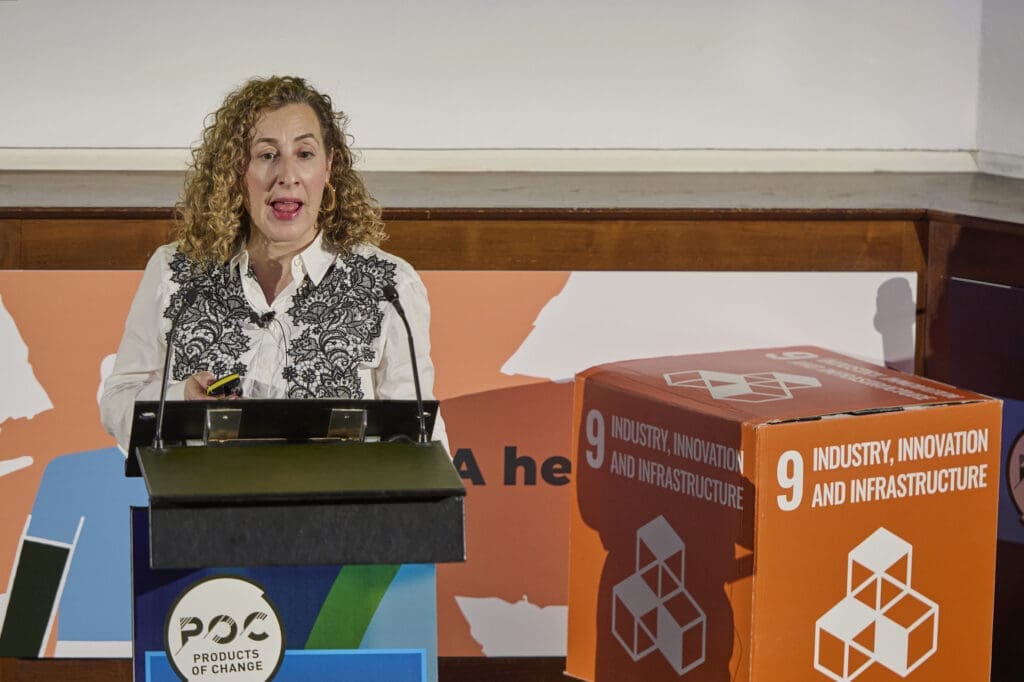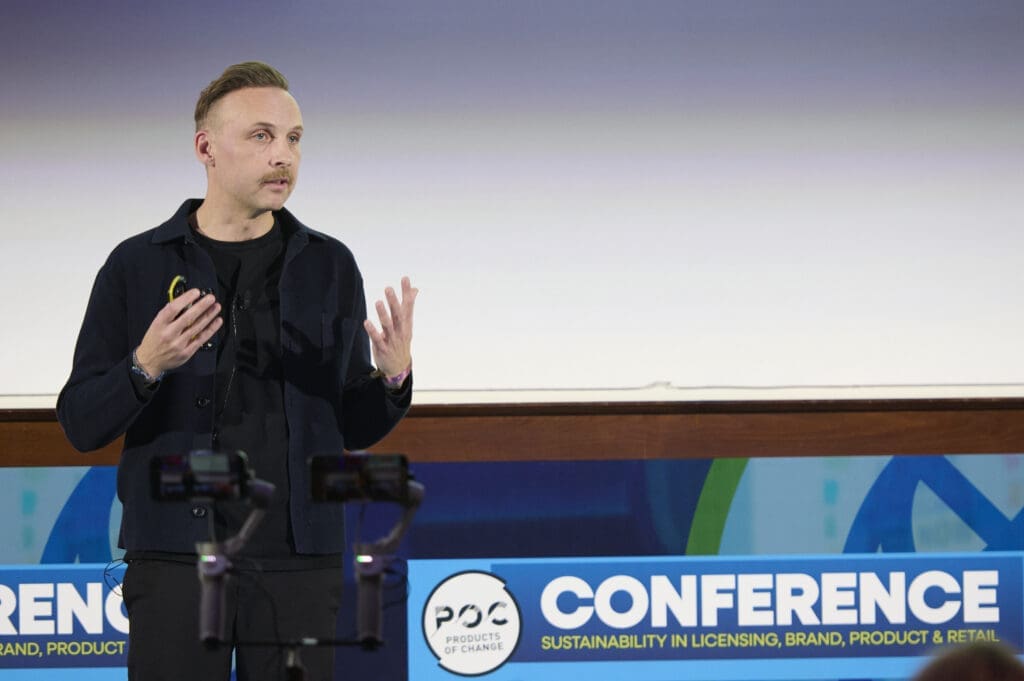The consumer fashion world is in something of a state of two halves, with growing interest around sustainability, but also the growing popularity of ultra-fast fashion from the likes of Shein. Can they be reconciled?
Tamara Sender Ceron, associate director, fashion retail at global market intelligence agency, Mintel, joined the POC Conference to talk attendees through exactly this dichotomy, the say-do gap, and how fashion brands and retailers can capitalise on it.
Mintel is an expert at predicting what is next for consumers, innovation and global markets, explained Tamara, and through her research into the fashion retail market, she has uncovered some vital consumer trends, concerns and needs that help shine a light on the above issues.
First, Tamara asked, how important is sustainability to consumers? She asked consumers their views on sustainability and compared these responses to their actual attitudes and behaviours.
While the vast majority say they are concerned about sustainability in fashion, there is a big say-do gap: a disconnect between the sentiment and actual action when buying fashion, particularly in the case of young people.
To dig into this, Tamara identified the average shopper: women between the ages of 16 and 34, living in the city.
“We cannot ignore the rising popularity of Shein and its ultra-fast fashion model,” said Tamara, which has disrupted the fashion market, and redefined perceptions of value among consumers. Almost half (46%) of women aged 16-34 have bought fashion items from Shein in the last year, up from 42% in 2024. This is concerning behaviour for us sustainability and ethics folk, but the important part is understanding why, in order to combat it.
Tamara explained that there are three key shifts in consumer behaviours when buying fashion:
- Growing focus on value
Amid cost pressures, consumers are adopting more frugal behaviours, including buying less fashion, increasingly thinking of the lifetime value so buying less and focusing more on value – 28% bought less than they usually do.
This thrifty mindset has boosted the second-hand market and normalised buying and selling used items, particularly among Gen Zs, with 32% Gen Zs buying second-hand fashion online and 25% selling unwanted items. An interesting statistic Tamara highlighted here was that 64% of 16-34s buy items that resell well, meaning they are buying new items while consciously thinking about their resell value and choosing brands accordingly that will resell well.
2. Growing mistrust of retailers and brands
Particularly for environmental claims – greenwashing has damaged brand perception and trust, with 68% of Britons saying it requires a lot of effort to know whether a brand or retailer is sustainable, with some thinking brands that make sustainability claims do so to make more money. This confusion and scepticism means they are less likely to shop sustainably.
3. Convenience is rising up the agenda
Ease, accessibility and frictionless shopping experience is key. Consumers hop between instore and online while shopping – checking the latest trends, and comparing to other items online.
Consumers also want fun and personalised experiences such as upcycling – 22% of female 16-24s are interested in repair services; it increases emotional value and enables them to fix favourite items.
Closing the say do gap
This is the biggest barrier, so Tamara sets out what retailers and brands can do:
- In response to a growing value mindset among consumers, brands need to provide value focused sustainable options
This means elevating offers with more durable quality designs; half of young women are willing to pay more for well-made fashion items.
Incoming legislation will see more brands moving towards designing pieces for durability, repairability, and recyclability – taking into account full lifespan of an article.
“Brands and retailers must see resale as an opportunity instead of a threat,” said Tamara.
As more consumers are buying and selling second hand fashion, the resell market is becoming incredibly crowded.
It’s essential to integrate resale into the retail model and make it easier for consumers to buy second-hand alongside new pieces. Retailers already doing this include the likes of Primark and Urban Outfitters.
2. Regain trust of consumers
Brands and retailers should focus on greater transparency and empower consumers with their decision making. “They need to bring customers with them on the sustainability journey through honest storytelling and through transparent comparable metrics,” emphasised Tamara.
Her research showed that 40% of 16-34 female consumers are willing to pay more for fashion from brands or retailer they trust. A great example of a company already doing this is Nobody’s Child with its digital product passports (DPPs).
3. Make circular services more convenient
More retailers are going to be adding circular services, said Tamara, and so to encourage uptake, they need to be accessible, frictionless and rewarding. Such services need to be visible and integrated into shopping journey.
An example of this is M&S’s partnership with Reskinned, enabling customers to donate items they no longer wear.
Retailers can also look to repair and personalisation services, such as for embroidered and upcycled clothing eg as Uniqlo is doing. Consumers can create stronger emotional connections with items, so they are more likely to cherish, re-wear and repair them.
Key takeaways
There is still big say-do gap, particularly among young women, said Tamara, but also an increasing interest in value, meaning fewer, but higher quality items. Customers mistrusting of sustainability claims, and above all are seeking convenience.
To close the say-do gap, retailers need to focus on value by elevating offerings, integrating resale into retail modules, and build trust through honest storytelling and clear metrics. Circularity needs to be accessible frictionless and fun, concluded Tamara.
Conference ticket holders can watch back the full Conference here with your unique passcode you can find in your emails (contact hello@productsofchange.com if any issues). You can also still purchase a digital Conference ticket and get full access to all the recordings of the day here.




